 Search by Keyword
Sign Up Below for our MONTHLY BEATLES TRIVIA QUIZ!
|
“HERE, THERE AND EVERYWHERE”
(John Lennon – Paul McCartney)
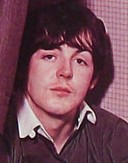 For the third album in a row, Paul McCartney continued his habit of writing a tender love ballad, forever cementing in people’s minds that he was the balladeer of the group. John Lennon even bought into this premise for awhile. “There was a period when I thought I didn’t write melodies,” he stated back in 1980, “that Paul wrote those and I just wrote straight, shouting rock’n’roll. But of course, when I think or some of my own songs – ‘In My Life,’ or some of the early stuff, ‘This Boy’ – I was writing melody with the best of them.” For the third album in a row, Paul McCartney continued his habit of writing a tender love ballad, forever cementing in people’s minds that he was the balladeer of the group. John Lennon even bought into this premise for awhile. “There was a period when I thought I didn’t write melodies,” he stated back in 1980, “that Paul wrote those and I just wrote straight, shouting rock’n’roll. But of course, when I think or some of my own songs – ‘In My Life,’ or some of the early stuff, ‘This Boy’ – I was writing melody with the best of them.”
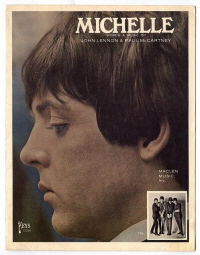 McCartney’s previous two efforts, “Yesterday” and “Michelle,” made a huge splash on the airwaves and with record sales worldwide, the former released as an American Beatles single reaching the top spot for four weeks, and the latter becoming the featured track on their multi-million selling album “Rubber Soul,” was nominated for "Song Of The Year" at the 1966 Grammy Awards (it won in that category the following year), and garnering successful cover versions on both sides of the Atlantic. “Here, There And Everywhere,” on the other hand, was the least popular of the three, not hitting the singles charts by The Beatles or any other artists and also being overshadowed on the “Revolver” album by other startling contributions such as “Yellow Submarine” and “Eleanor Rigby.” McCartney’s previous two efforts, “Yesterday” and “Michelle,” made a huge splash on the airwaves and with record sales worldwide, the former released as an American Beatles single reaching the top spot for four weeks, and the latter becoming the featured track on their multi-million selling album “Rubber Soul,” was nominated for "Song Of The Year" at the 1966 Grammy Awards (it won in that category the following year), and garnering successful cover versions on both sides of the Atlantic. “Here, There And Everywhere,” on the other hand, was the least popular of the three, not hitting the singles charts by The Beatles or any other artists and also being overshadowed on the “Revolver” album by other startling contributions such as “Yellow Submarine” and “Eleanor Rigby.”
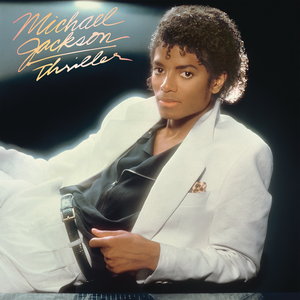 However, Paul has expressed how strongly he felt about "Here, There And Everywhere" in a lot of interviews throughout the years. "People say, 'Which is your favorite tune?' and I am often tempted to say 'Yesterday,' because it arrived so magically. But I like this one," he once stated about this "Revolver" ballad. "In fact, if pushed, I would say that 'Here, There And Everywhere' is my own favorite of all my songs...So now, when I sing it, I look back at it and think, 'The boy's not bad!" Interestingly, after Michael Jackson bought the rights to the “Lennon / McCartney” catalog in August of 1985, Paul expressed the wish (during an interview) that he could at least own a couple that he was particularly fond of. “Here, There And Everywhere” was one of these. However, Paul has expressed how strongly he felt about "Here, There And Everywhere" in a lot of interviews throughout the years. "People say, 'Which is your favorite tune?' and I am often tempted to say 'Yesterday,' because it arrived so magically. But I like this one," he once stated about this "Revolver" ballad. "In fact, if pushed, I would say that 'Here, There And Everywhere' is my own favorite of all my songs...So now, when I sing it, I look back at it and think, 'The boy's not bad!" Interestingly, after Michael Jackson bought the rights to the “Lennon / McCartney” catalog in August of 1985, Paul expressed the wish (during an interview) that he could at least own a couple that he was particularly fond of. “Here, There And Everywhere” was one of these.
Songwriting History
 “I wrote that by John’s pool one day,” Paul remembered in 1984. In his 1997 book “Many Years From Now,” Paul explains how he showed up at Lennon’s Kenwood home to write songs one day in June of 1966 and, while John was still in bed, asked someone there for a cup of tea and went with his guitar to sit alongside John’s swimming pool. “I sat out by the pool on one of the sun chairs with my guitar,” Paul relates, “and started strumming in E, and soon had a few chords, and I think by the time he’d woken up, I had pretty much written the song, so we took it indoors and finished it up…John might have helped with a few last words…But it’s very me, it’s one of my favorite songs that I’ve written…So I would credit me pretty much 80-20 on that one.” “I wrote that by John’s pool one day,” Paul remembered in 1984. In his 1997 book “Many Years From Now,” Paul explains how he showed up at Lennon’s Kenwood home to write songs one day in June of 1966 and, while John was still in bed, asked someone there for a cup of tea and went with his guitar to sit alongside John’s swimming pool. “I sat out by the pool on one of the sun chairs with my guitar,” Paul relates, “and started strumming in E, and soon had a few chords, and I think by the time he’d woken up, I had pretty much written the song, so we took it indoors and finished it up…John might have helped with a few last words…But it’s very me, it’s one of my favorite songs that I’ve written…So I would credit me pretty much 80-20 on that one.”
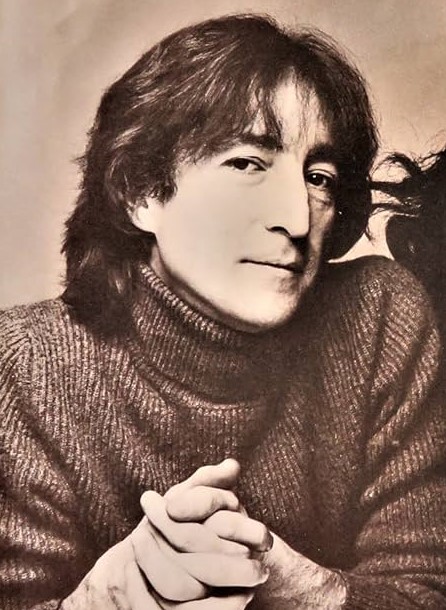 John Lennon was noncommittal on his actual input on the writing of the song, although he was very complimentary. In his Playboy interview from 1980 John stated: "’Here, There And Everywhere’ was Paul’s song completely, I believe - and one of my favorite songs of The Beatles." John Lennon was noncommittal on his actual input on the writing of the song, although he was very complimentary. In his Playboy interview from 1980 John stated: "’Here, There And Everywhere’ was Paul’s song completely, I believe - and one of my favorite songs of The Beatles."
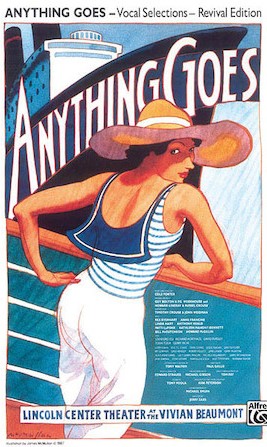 A hint to what John may have actually contributed to the writing of the song appears in Paul's 2021 book "The Lyrics." He states: "In coming up with lyrics to 'Here, There And Everywhere,' we were trying to emulate the openings of some of our favorite old songs that had a completely rambling preamble...think of (the 1934 song) 'Anything Goes.' There's a preliminary section to that Cole Porter song that seems to have absolutely nothing to do with it: 'Times have changed / And we've often rewound the clock / Since the Puritans got the shock / When they landed on Plymouth Rock'...That's what lies behind the lines 'To lead a better life / I need my love to be here.'" Since Paul here uses the word "we" when describing this "preamble," it could be construed as meaning John helped him write this section of the song. A hint to what John may have actually contributed to the writing of the song appears in Paul's 2021 book "The Lyrics." He states: "In coming up with lyrics to 'Here, There And Everywhere,' we were trying to emulate the openings of some of our favorite old songs that had a completely rambling preamble...think of (the 1934 song) 'Anything Goes.' There's a preliminary section to that Cole Porter song that seems to have absolutely nothing to do with it: 'Times have changed / And we've often rewound the clock / Since the Puritans got the shock / When they landed on Plymouth Rock'...That's what lies behind the lines 'To lead a better life / I need my love to be here.'" Since Paul here uses the word "we" when describing this "preamble," it could be construed as meaning John helped him write this section of the song.
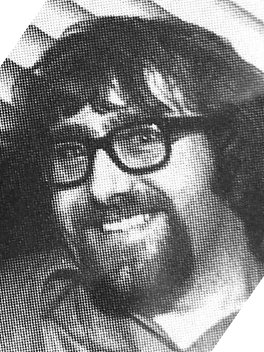 Their assistant road manager Mal Evans also claims a piece of the songwriting pie, as related in Keith Badman's book "The Beatles Off The Record." “At the time, (fellow road manager) Neil Aspinall and I were staying in a hotel in London and we had been up rather late, until about seven o’clock in the morning, and we were really whacked out. And at nine o’clock, there is a bang at the door and jolly ol’ Paul comes in with a smile from ear to ear. ‘Good morning, lads. Thought we’d come and have breakfast with you.’ ‘Oh, sure, Paul,’ we replied.’ Then he said, ‘I’ve got this song of mine and I’m stuck for a line.’ So, he sits down, plays it for us and sings it, and the line I came up with was ‘watching her eyes, hoping I’m always there.’ I’m very eye conscious.” Their assistant road manager Mal Evans also claims a piece of the songwriting pie, as related in Keith Badman's book "The Beatles Off The Record." “At the time, (fellow road manager) Neil Aspinall and I were staying in a hotel in London and we had been up rather late, until about seven o’clock in the morning, and we were really whacked out. And at nine o’clock, there is a bang at the door and jolly ol’ Paul comes in with a smile from ear to ear. ‘Good morning, lads. Thought we’d come and have breakfast with you.’ ‘Oh, sure, Paul,’ we replied.’ Then he said, ‘I’ve got this song of mine and I’m stuck for a line.’ So, he sits down, plays it for us and sings it, and the line I came up with was ‘watching her eyes, hoping I’m always there.’ I’m very eye conscious.”
 One other sketchy but important detail concerns when this song was composed. The book “Many Years From Now” describes the songwriting session at John's Kenwood home as “a nice June day,” which would make sense since Paul wrote most of the song by the pool and the first recording session for this composition was on June 14th, 1966, while the song was fresh in his mind. One other sketchy but important detail concerns when this song was composed. The book “Many Years From Now” describes the songwriting session at John's Kenwood home as “a nice June day,” which would make sense since Paul wrote most of the song by the pool and the first recording session for this composition was on June 14th, 1966, while the song was fresh in his mind.
 In order for us to ascertain the songwriting details about this song, we need to acknowledge this quote from Paul found in the “Beatles Anthology” book: “One of my special memories is when we were in Obertauern, Austria, filming for ‘Help!’ John and I shared a room and we were taking off our heavy ski boots after a day’s filming, ready to have a shower and get ready for the nice bit, the evening meal and the drinks. We were playing a cassette of our new recordings and my song ‘Here, There And Everywhere’ was on. And I remember John saying, ‘You know, I probably like that better than any of my songs on the tape.’ Coming from John, that was high praise indeed.” In order for us to ascertain the songwriting details about this song, we need to acknowledge this quote from Paul found in the “Beatles Anthology” book: “One of my special memories is when we were in Obertauern, Austria, filming for ‘Help!’ John and I shared a room and we were taking off our heavy ski boots after a day’s filming, ready to have a shower and get ready for the nice bit, the evening meal and the drinks. We were playing a cassette of our new recordings and my song ‘Here, There And Everywhere’ was on. And I remember John saying, ‘You know, I probably like that better than any of my songs on the tape.’ Coming from John, that was high praise indeed.”
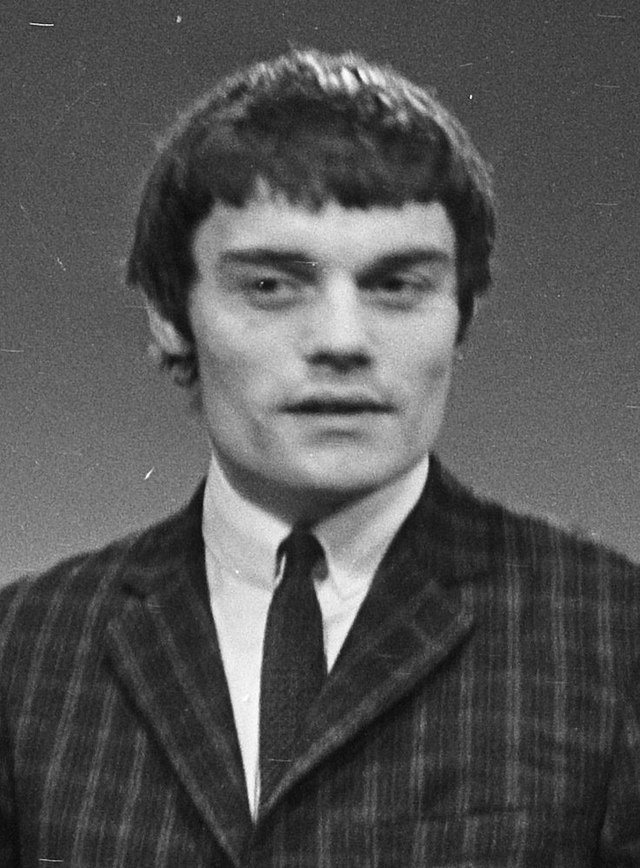 The Beatles were in Obertauern, Austria working on the ‘Help!’ movie from March 14th through 20th, 1965. If we were to try to combine both of Paul’s vivid recollections concerning the writing of this song, it would have to date back to June of 1964. However, the group was embroiled in their first international tour from June 4th through till the month’s end, not arriving back in London until July 2nd, 1964. The first three days of June were spent in the recording studio finishing up the “A Hard Day’s Night” album and the “Long Tall Sally” EP, not to mention auditioning Jimmy Nicol as a last minute replacement for an ailing Ringo before they left for their first concert date in Denmark. Hardly time to convene at John’s house to write a song and record a demo on cassette! It also seems unlikely that, since both Paul and John loved the song so much, they would have held it back until four albums later! The Beatles were in Obertauern, Austria working on the ‘Help!’ movie from March 14th through 20th, 1965. If we were to try to combine both of Paul’s vivid recollections concerning the writing of this song, it would have to date back to June of 1964. However, the group was embroiled in their first international tour from June 4th through till the month’s end, not arriving back in London until July 2nd, 1964. The first three days of June were spent in the recording studio finishing up the “A Hard Day’s Night” album and the “Long Tall Sally” EP, not to mention auditioning Jimmy Nicol as a last minute replacement for an ailing Ringo before they left for their first concert date in Denmark. Hardly time to convene at John’s house to write a song and record a demo on cassette! It also seems unlikely that, since both Paul and John loved the song so much, they would have held it back until four albums later!
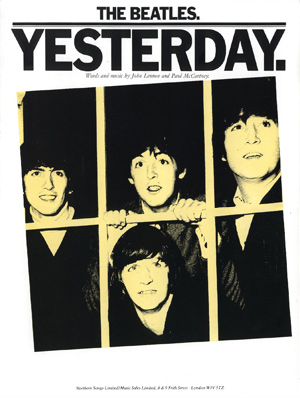 One can surmise that Paul must have remembered the account in Austria concerning a different composition of his from around that same time (possibly “Yesterday”?) and exchanged the details to that song. One thing that we do know is that both stories can’t be correct, the June 1966 account being much more feasible. One can surmise that Paul must have remembered the account in Austria concerning a different composition of his from around that same time (possibly “Yesterday”?) and exchanged the details to that song. One thing that we do know is that both stories can’t be correct, the June 1966 account being much more feasible.
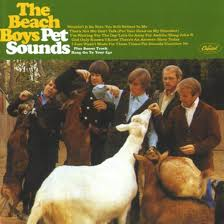 Lyrically, the song is presumed to be inspired by McCartney’s then current girlfriend Jane Asher. Musically, Paul explained in a 1974 Rolling Stone interview that "Here, There And Everywhere" "was supposed to be a Beach Boys song, but you wouldn't have known." Its inspiration appears to be the result of a promotion of The Beach Boys album “Pet Sounds” that Lennon and McCartney (and Keith Moon among many other musicians and various journalists) were treated to by band member Bruce Johnston at the Waldorf Hotel in London on May 17th, 1966, the day after its US release (its UK release wasn't until June 27th). "It was reaaly cool, they loved it," Bruce Johnston recalls, adding, "John and Paul made me play it twice." Lyrically, the song is presumed to be inspired by McCartney’s then current girlfriend Jane Asher. Musically, Paul explained in a 1974 Rolling Stone interview that "Here, There And Everywhere" "was supposed to be a Beach Boys song, but you wouldn't have known." Its inspiration appears to be the result of a promotion of The Beach Boys album “Pet Sounds” that Lennon and McCartney (and Keith Moon among many other musicians and various journalists) were treated to by band member Bruce Johnston at the Waldorf Hotel in London on May 17th, 1966, the day after its US release (its UK release wasn't until June 27th). "It was reaaly cool, they loved it," Bruce Johnston recalls, adding, "John and Paul made me play it twice."
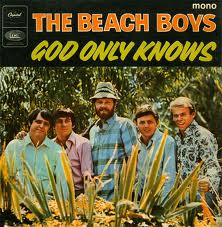 While it has been widely suggested that The Beatles' next album "Sgt. Pepper's Lonely Hearts Club Band" was inspired by this Beach Boys album, Paul states in his book "The Lyrics," "it's hard to beat the fact that 'Here, There And Everywhere' was influenced most immediately by The Beach Boys' 'God Only Knows' from 'Pet Sounds.' What's really interesting is that 'God Only Knows' was itself inspired by Brian Wilson's repeated listening to our songs on 'Rubber Soul.'" While it has been widely suggested that The Beatles' next album "Sgt. Pepper's Lonely Hearts Club Band" was inspired by this Beach Boys album, Paul states in his book "The Lyrics," "it's hard to beat the fact that 'Here, There And Everywhere' was influenced most immediately by The Beach Boys' 'God Only Knows' from 'Pet Sounds.' What's really interesting is that 'God Only Knows' was itself inspired by Brian Wilson's repeated listening to our songs on 'Rubber Soul.'"
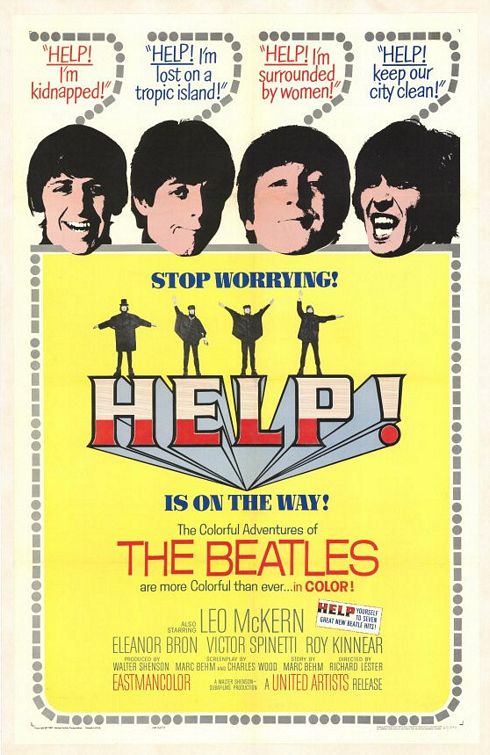 Therefore, the Beach Boys' track "God Only Knows," as heard at this listening party, was quickly assimilated by McCartney and incorporated into "Here, There And Everywhere" for the currect album that the band was wrapping up at the time. With "God Only Knows" still ringing in Paul's ears a couple of weeks or so later, he took to emulating these innovative chord structures and melody lines while relaxing at John’s pool as detailed above. Therefore, Paul's recollection of the song being previewed by him and Lennon in Austria during the filming of the movie "Help!" detailed above is totally blown out of the water as innacurate. Therefore, the Beach Boys' track "God Only Knows," as heard at this listening party, was quickly assimilated by McCartney and incorporated into "Here, There And Everywhere" for the currect album that the band was wrapping up at the time. With "God Only Knows" still ringing in Paul's ears a couple of weeks or so later, he took to emulating these innovative chord structures and melody lines while relaxing at John’s pool as detailed above. Therefore, Paul's recollection of the song being previewed by him and Lennon in Austria during the filming of the movie "Help!" detailed above is totally blown out of the water as innacurate.
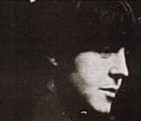 Upon examining Paul's original handwritten lyric sheet, we see a few changes he made. For instance, in the preamble he originally wrote "I need my love to be near" instead of "here." Other changes were "she doesn't seem to care" becoming "she doesn't know he's there," "I need her everywhere" changed to "I want her everywhere," "as long as she's beside me" thus becoming "and if she's beside me," "for to love her" changed into "but to love her" and "hoping she's always here (near)" becoming "hoping I'm always there." Upon examining Paul's original handwritten lyric sheet, we see a few changes he made. For instance, in the preamble he originally wrote "I need my love to be near" instead of "here." Other changes were "she doesn't seem to care" becoming "she doesn't know he's there," "I need her everywhere" changed to "I want her everywhere," "as long as she's beside me" thus becoming "and if she's beside me," "for to love her" changed into "but to love her" and "hoping she's always here (near)" becoming "hoping I'm always there."
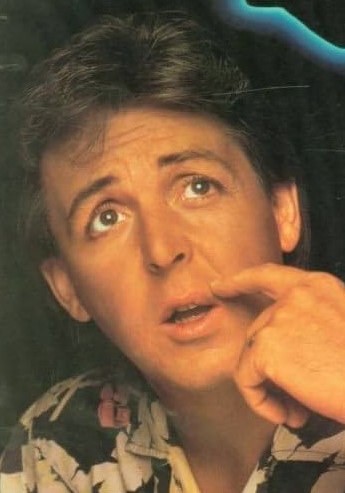 Many of these changes were made to work along with his lyrical intent. "'Here, There And Everywhere' has a couple of interesting structural points about it," McCartney explains in the book "Many Years From Now." "Lyrically the way it combines the whole title: each verse takes a word. ‘Here’ discusses here. Next verse, ‘there’ discusses there, then it pulls it all together in the last verse, with ‘everywhere.’ The structure of that is quite neat." Many of these changes were made to work along with his lyrical intent. "'Here, There And Everywhere' has a couple of interesting structural points about it," McCartney explains in the book "Many Years From Now." "Lyrically the way it combines the whole title: each verse takes a word. ‘Here’ discusses here. Next verse, ‘there’ discusses there, then it pulls it all together in the last verse, with ‘everywhere.’ The structure of that is quite neat."
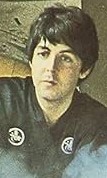 Adding to this examination of Paul’s lyrics is the observation of concluding every verse with the word “there,” which leads perfectly into what follows. The first verse (aka, the “here” verse) ends with the phrase “nobody can deny that there’s something there,” which segues very nicely into the second verse (or, the “there” verse). This verse concludes with the phrase “someone is speaking, but she doesn’t know he’s there,” transcending nicely into the bridge, which begins the emphasis on the word “everywhere,” although it will receive its own full treatment in the “everywhere” verse that follows it. This final verse concludes with the line “hoping I’m always there,” moving back into the “everywhere” bridge with perfect uniformity. Quite “neat” indeed!" Adding to this examination of Paul’s lyrics is the observation of concluding every verse with the word “there,” which leads perfectly into what follows. The first verse (aka, the “here” verse) ends with the phrase “nobody can deny that there’s something there,” which segues very nicely into the second verse (or, the “there” verse). This verse concludes with the phrase “someone is speaking, but she doesn’t know he’s there,” transcending nicely into the bridge, which begins the emphasis on the word “everywhere,” although it will receive its own full treatment in the “everywhere” verse that follows it. This final verse concludes with the line “hoping I’m always there,” moving back into the “everywhere” bridge with perfect uniformity. Quite “neat” indeed!"
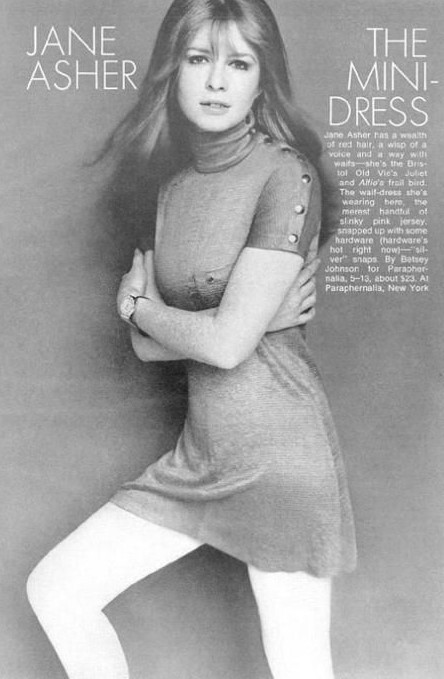 The poetic phrases that contained in these lyrics, while pigeonholed into this framework and rhyme scheme, transcend cliché and reveal some touching depictions of romanticism. "My favorite line is 'Changing my life with the wave of her hand,'" Paul explains in his book "The Lyrics," then adding, "I look at that line now and wonder where it came from. What was it? Was I thinking of the queen waving from the royal carriage? Or just the power of the little thing. The power of doing hardly anything. She waves her hand and she's changed my life. It summons up a lot." This lyric depicts the realization that a shy wave of "hello" from this woman was the start of a move from bachelorhood and freedom to marital bliss. His life would never be the same after that small gesture. Of course, a failed engagement to Jane Asher and three marriages later, I guess that “wave of her hand” changed his life only for a few years." The poetic phrases that contained in these lyrics, while pigeonholed into this framework and rhyme scheme, transcend cliché and reveal some touching depictions of romanticism. "My favorite line is 'Changing my life with the wave of her hand,'" Paul explains in his book "The Lyrics," then adding, "I look at that line now and wonder where it came from. What was it? Was I thinking of the queen waving from the royal carriage? Or just the power of the little thing. The power of doing hardly anything. She waves her hand and she's changed my life. It summons up a lot." This lyric depicts the realization that a shy wave of "hello" from this woman was the start of a move from bachelorhood and freedom to marital bliss. His life would never be the same after that small gesture. Of course, a failed engagement to Jane Asher and three marriages later, I guess that “wave of her hand” changed his life only for a few years."
Recording History
 “We devoted three full days to it, which in that era was a lot of time,” recalled engineer Geoff Emerick. While the third session he details in this quote was not a “full day,” comprising only an approximate hour to do a vocal harmony overdub, they did rack up a substantial sixteen-and-a-half hours in entirety to complete the finished song. “We devoted three full days to it, which in that era was a lot of time,” recalled engineer Geoff Emerick. While the third session he details in this quote was not a “full day,” comprising only an approximate hour to do a vocal harmony overdub, they did rack up a substantial sixteen-and-a-half hours in entirety to complete the finished song.
 This beautiful track was the next-to-last song recorded for the “Revolver” album, recording of this composition starting on June 14th, 1966. They entered EMI Studio Two on this date at 7 pm for a seven hour session devoted entirely to the song. Much time was no doubt used to run through and perfect the arrangement with only four takes of the instrumental rhythm track being recorded on this day, the first three being breakdowns that didn't make it to the end of the song. Recorded onto track one of the four-track tape for these takes were McCartney on bass, Harrison on acoustic guitar and Ringo on drums. These early takes were much faster than the finished song as we know it and didn’t feature any vocals. This beautiful track was the next-to-last song recorded for the “Revolver” album, recording of this composition starting on June 14th, 1966. They entered EMI Studio Two on this date at 7 pm for a seven hour session devoted entirely to the song. Much time was no doubt used to run through and perfect the arrangement with only four takes of the instrumental rhythm track being recorded on this day, the first three being breakdowns that didn't make it to the end of the song. Recorded onto track one of the four-track tape for these takes were McCartney on bass, Harrison on acoustic guitar and Ringo on drums. These early takes were much faster than the finished song as we know it and didn’t feature any vocals.
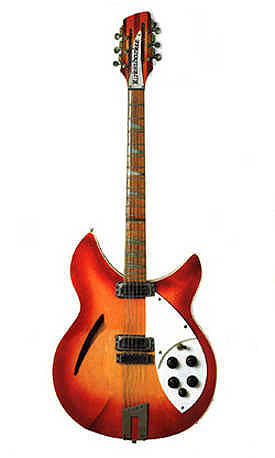 Considering the fourth take to be the keeper at that point, they took to overdubbing the distinctive harmony “oohs” of John, Paul and George onto another of the four tracks of the tape, undoubtedly huddled around a single microphone as in earlier sessions. George also overdubbed a "chromatic melody heard during the bridge...on acoustic 12-string guitar" in open spaces of this second 'track' that didn't contain the harmonies, as described by Kevin Howlett in the 2022 Deluxe editions of "Revolver." After these overdubs were performed, only two of the four tracks were filled. “We also planned the track layout very carefully,” Geoff Emerick continues, “so that there was a completely separate track that we could dedicate to bass, allowing Paul to focus on each and every note when he recorded the overdub.” Considering the fourth take to be the keeper at that point, they took to overdubbing the distinctive harmony “oohs” of John, Paul and George onto another of the four tracks of the tape, undoubtedly huddled around a single microphone as in earlier sessions. George also overdubbed a "chromatic melody heard during the bridge...on acoustic 12-string guitar" in open spaces of this second 'track' that didn't contain the harmonies, as described by Kevin Howlett in the 2022 Deluxe editions of "Revolver." After these overdubs were performed, only two of the four tracks were filled. “We also planned the track layout very carefully,” Geoff Emerick continues, “so that there was a completely separate track that we could dedicate to bass, allowing Paul to focus on each and every note when he recorded the overdub.”
 A good amount of time must have been spent on these Beach Boys-like harmonies, arranging and coaxing being done by producer George Martin. Geoff Emerick explains: “George’s real expertise was...in vocal harmony work, there’s no doubt about that. That is his forte, grooming and working out those great harmonies.” George Martin humbly acknowledges: “The harmonies on that are very simple, just basic triads which the boys hummed behind and found very easy to do. There’s nothing very clever, no counterpoint, just moving block harmonies. Very simple to do…but very effective.” A good amount of time must have been spent on these Beach Boys-like harmonies, arranging and coaxing being done by producer George Martin. Geoff Emerick explains: “George’s real expertise was...in vocal harmony work, there’s no doubt about that. That is his forte, grooming and working out those great harmonies.” George Martin humbly acknowledges: “The harmonies on that are very simple, just basic triads which the boys hummed behind and found very easy to do. There’s nothing very clever, no counterpoint, just moving block harmonies. Very simple to do…but very effective.”
At 2 am the next morning, seven hours of work being done, they called it a day. However, they decided to scrap it all and start again fresh two days later. At least they figured out how to approach the song and worked out the harmonies, so it wasn’t a total loss.
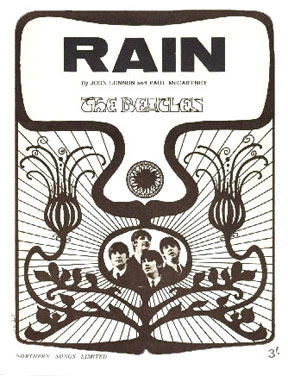 June 16th, 1966 was that next recording session, which was scheduled to begin at 7 pm in EMI Studio Two but actually started around 8:30 pm upon returning from Studio Two of Television Centre in London after a mimed live broadcast of "Rain" and "Paperback Writer" for the TV show "Top Of The Pops." Deciding to slow the tempo down somewhat, they recorded nine more takes of the rhythm track (takes 5 through 13) onto track one of the four-track tape with the instrumentation being Paul on electric rhythm guitar, Ringo on drums using padded timpani mallets, and George on electric 12-string guitar during the bridges and with a volume pedal effect during the conclusion. John once again sat out musically on these rhythm tracks, only two of which were complete takes, these being "take six" (as included on the 2022 Deluxe editions of "Revolver") and "take 13," this final take being deemed the best. Paul sang a guide vocal on track four of these takes, "take seven" appearing as a bonus track on the "Real Love" CD single released in 1996 with John, Paul and George's harmonies from the finished version added in. June 16th, 1966 was that next recording session, which was scheduled to begin at 7 pm in EMI Studio Two but actually started around 8:30 pm upon returning from Studio Two of Television Centre in London after a mimed live broadcast of "Rain" and "Paperback Writer" for the TV show "Top Of The Pops." Deciding to slow the tempo down somewhat, they recorded nine more takes of the rhythm track (takes 5 through 13) onto track one of the four-track tape with the instrumentation being Paul on electric rhythm guitar, Ringo on drums using padded timpani mallets, and George on electric 12-string guitar during the bridges and with a volume pedal effect during the conclusion. John once again sat out musically on these rhythm tracks, only two of which were complete takes, these being "take six" (as included on the 2022 Deluxe editions of "Revolver") and "take 13," this final take being deemed the best. Paul sang a guide vocal on track four of these takes, "take seven" appearing as a bonus track on the "Real Love" CD single released in 1996 with John, Paul and George's harmonies from the finished version added in.
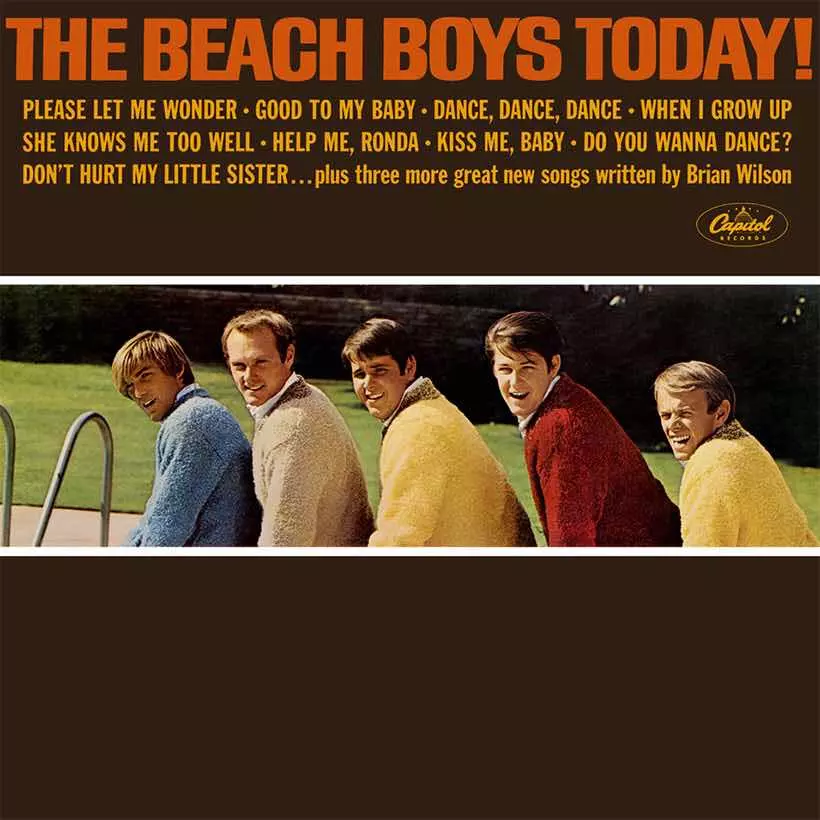 Onto "take 13," they overbudded harmonies by John, Paul and George (snapping their fingers toward the end) onto track two, double-tracking these onto track three. Concerning the harmonies, Paul told Beach Boys historian David Leaf that "we were doing harmonies, and the inspiration for that was The Beach Boys. We had that in our minds during the introduction...I don't think anyone, unless I told them, would even notice, but we'd often do that, get something off an artist that you really liked and have them in your mind while you were recording things, to give you the inspiration and give you the direction. Nearly always, it ended up sounding more like us than them anyway." Onto 'take four' was recorded Paul's bass, thus wiping out his guide vocal. Onto "take 13," they overbudded harmonies by John, Paul and George (snapping their fingers toward the end) onto track two, double-tracking these onto track three. Concerning the harmonies, Paul told Beach Boys historian David Leaf that "we were doing harmonies, and the inspiration for that was The Beach Boys. We had that in our minds during the introduction...I don't think anyone, unless I told them, would even notice, but we'd often do that, get something off an artist that you really liked and have them in your mind while you were recording things, to give you the inspiration and give you the direction. Nearly always, it ended up sounding more like us than them anyway." Onto 'take four' was recorded Paul's bass, thus wiping out his guide vocal.
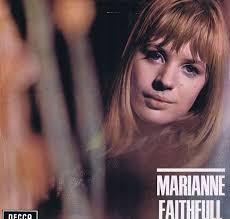 A redution mix was then made of "take 13," the rhythm track of rhythm guitar, drums and George's 12-string guitar on track one being combined with Paul's bass on track four to track one of the new four-track tape. The harmonies from track two and three of the former tape were combined onto track two of the new tape. Paul then recorded his stunning lead vocals onto track four. Paul remembers this vocal session: "When I sang it in the studio I remember thinking, I’ll sing it like Marianne Faithfull; something no one would ever know. You get these little things in your mind; you think, I’ll sing it like James Brown might, but of course it’s always you that sings it, but in your head there’s a little James Brown for that session. If you can’t think how to sing the thing, that’s always a good clue: imagine Aretha Franklin to come and sing it, Ray Charles is going to sing it. So that one was a little voice, I used an almost falsetto voice and double-tracked it. My Marianne Faithfull impression." A redution mix was then made of "take 13," the rhythm track of rhythm guitar, drums and George's 12-string guitar on track one being combined with Paul's bass on track four to track one of the new four-track tape. The harmonies from track two and three of the former tape were combined onto track two of the new tape. Paul then recorded his stunning lead vocals onto track four. Paul remembers this vocal session: "When I sang it in the studio I remember thinking, I’ll sing it like Marianne Faithfull; something no one would ever know. You get these little things in your mind; you think, I’ll sing it like James Brown might, but of course it’s always you that sings it, but in your head there’s a little James Brown for that session. If you can’t think how to sing the thing, that’s always a good clue: imagine Aretha Franklin to come and sing it, Ray Charles is going to sing it. So that one was a little voice, I used an almost falsetto voice and double-tracked it. My Marianne Faithfull impression."
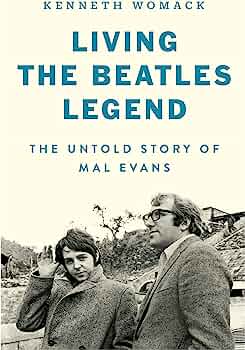 As explained in Kenneth Womack's 2023 book "Living The Beatles Legend: The Untold Story Of Mal Evans," Mal Evans described "Here, There And Everywhere" in his diary as a "lovely song," adding that he was present alone with Paul when he laid down his lead vocal in the studio. "He thinks it's too 'fruity,'" Mal Evans relates, adding "I don't." As explained in Kenneth Womack's 2023 book "Living The Beatles Legend: The Untold Story Of Mal Evans," Mal Evans described "Here, There And Everywhere" in his diary as a "lovely song," adding that he was present alone with Paul when he laid down his lead vocal in the studio. "He thinks it's too 'fruity,'" Mal Evans relates, adding "I don't."
 What also helped to get the desired Marianne Faithfull sound was the recording technique. As Mark Lewisohn explains in his book “The Beatles Recording Sessions,” his vocals were “slowed down on the tape to sound speeded up on playback.” The vocal track was complete by 3:30 am the next morning and they once again called it a day, confident the song was complete. What also helped to get the desired Marianne Faithfull sound was the recording technique. As Mark Lewisohn explains in his book “The Beatles Recording Sessions,” his vocals were “slowed down on the tape to sound speeded up on playback.” The vocal track was complete by 3:30 am the next morning and they once again called it a day, confident the song was complete.
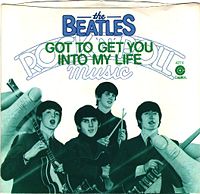 Nearly complete anyway, as it turned out. At 7 pm the next day (June 17th, 1966), they again entered EMI Studio Two at 7 pm to put the finishing touch on the song. By about 8 pm, Paul had double-tracked his lead vocals onto track three of the tape, along with George doubling his 12-string guitar passages in the bridges. A couple subtle differences can easily be noted between the two lead vocal tracks. The first is Paul’s downward melodic lines in the last verse on the words “love never dies, watching her eyes.” The second is Paul singing “I’ll be there” during the conclusion instead of “You’ll be there” as he had sung the previous day. After doing a little more work on the previously recorded song “Got To Get You Into My Life,” the first mono mix of “Here, There And Everywhere” was created by George Martin, Geoff Emerick and 2nd engineer Phil McDonald, although this was never released. Nearly complete anyway, as it turned out. At 7 pm the next day (June 17th, 1966), they again entered EMI Studio Two at 7 pm to put the finishing touch on the song. By about 8 pm, Paul had double-tracked his lead vocals onto track three of the tape, along with George doubling his 12-string guitar passages in the bridges. A couple subtle differences can easily be noted between the two lead vocal tracks. The first is Paul’s downward melodic lines in the last verse on the words “love never dies, watching her eyes.” The second is Paul singing “I’ll be there” during the conclusion instead of “You’ll be there” as he had sung the previous day. After doing a little more work on the previously recorded song “Got To Get You Into My Life,” the first mono mix of “Here, There And Everywhere” was created by George Martin, Geoff Emerick and 2nd engineer Phil McDonald, although this was never released.
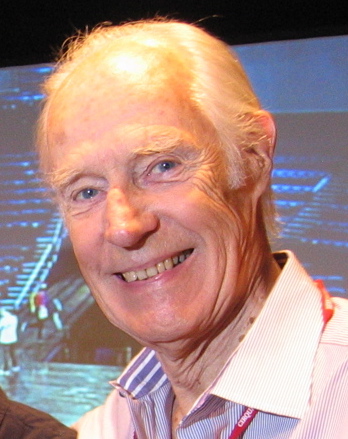 An interesting observation here is George's Martin's later statement about this being his "favorite Paul McCartney song," adding, "it is probably his as well, so writing a special arrangement for one of my favorite voices was a daunting proposition." George Martin did a string and woodwind score for the composition for a 1993 radio concert as well as an arrangement for Celine Dion for his album "In My Life" in 1997, which makes us speculate that if there hadn't been a crunch in time to complete "Revolver," would George Martin have proposed a beautiful orchestral arrangement for "Here, There And Everywhere" had he had the time to do so? An interesting observation here is George's Martin's later statement about this being his "favorite Paul McCartney song," adding, "it is probably his as well, so writing a special arrangement for one of my favorite voices was a daunting proposition." George Martin did a string and woodwind score for the composition for a 1993 radio concert as well as an arrangement for Celine Dion for his album "In My Life" in 1997, which makes us speculate that if there hadn't been a crunch in time to complete "Revolver," would George Martin have proposed a beautiful orchestral arrangement for "Here, There And Everywhere" had he had the time to do so?
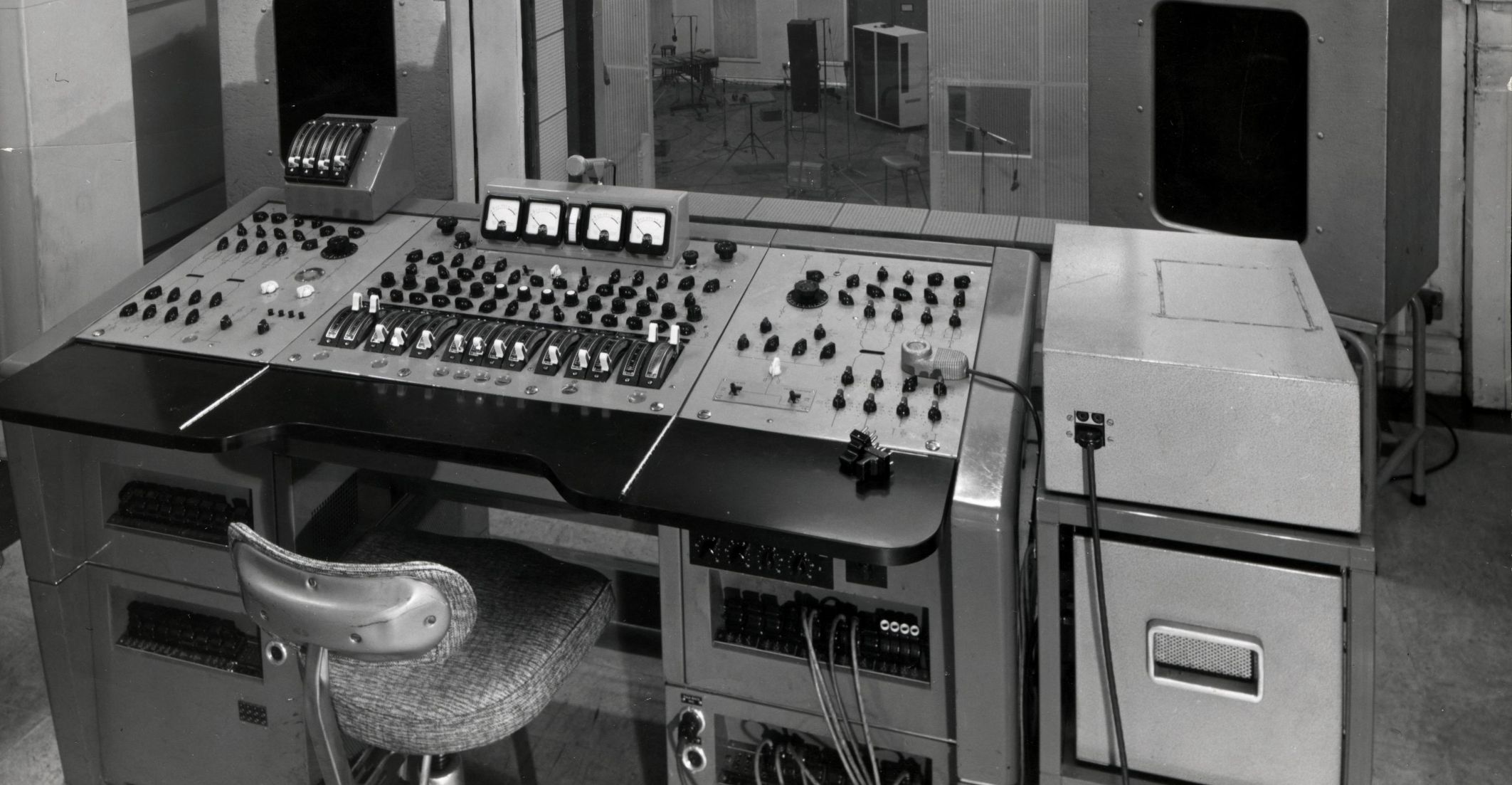 Both of the mono and stereo mixes that were released were created on June 21st, 1966 in the control room of EMI Studio Three by the same George Martin, Geoff Emerick and Phil McDonald team. The stereo mix was done first, which separates the double-tracked lead vocals entirely, one on the left and the other on the right. The same, therefore, is done with the double-tracked lead guitar passages from George Harrison. The rhythm track is mostly in the right channel while the block harmonies are primarily in the left channel. Both of the mono and stereo mixes that were released were created on June 21st, 1966 in the control room of EMI Studio Three by the same George Martin, Geoff Emerick and Phil McDonald team. The stereo mix was done first, which separates the double-tracked lead vocals entirely, one on the left and the other on the right. The same, therefore, is done with the double-tracked lead guitar passages from George Harrison. The rhythm track is mostly in the right channel while the block harmonies are primarily in the left channel.
The mono mix has some subtle differences in the final chord of the song. First is the absence of the block harmonies and the second is the quick fade-out as compared to the more natural-sounding fade appearing in the stereo mix.
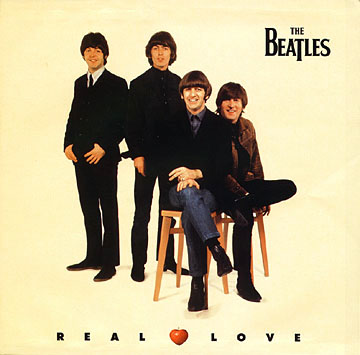 A further mix of this song, as mentioned above, was done in preparation for the Anthology project of the mid '90s. A mono mix of the original "take seven" was combined with the stereo harmonies for a pseudo stereo mix, this not making the grade for the “Anthology 2” set, but added as a bonus track on the 1996 “Real Love” CD single as an afterthought. A further mix of this song, as mentioned above, was done in preparation for the Anthology project of the mid '90s. A mono mix of the original "take seven" was combined with the stereo harmonies for a pseudo stereo mix, this not making the grade for the “Anthology 2” set, but added as a bonus track on the 1996 “Real Love” CD single as an afterthought.
 Sometime in 2022, George Martin's son Giles Martin, along with engineer Sam Okell, prepared a new stereo mix of the song using AI to separate the rhythm track elements for seperation between the left and right channels, thus creating a superior mix for future generations to enjoy. While they were at it, they also created a mix of ''take six" with guide vocals from Paul that was included in Deluxe editions of "Revolver" that year. Sometime in 2022, George Martin's son Giles Martin, along with engineer Sam Okell, prepared a new stereo mix of the song using AI to separate the rhythm track elements for seperation between the left and right channels, thus creating a superior mix for future generations to enjoy. While they were at it, they also created a mix of ''take six" with guide vocals from Paul that was included in Deluxe editions of "Revolver" that year.
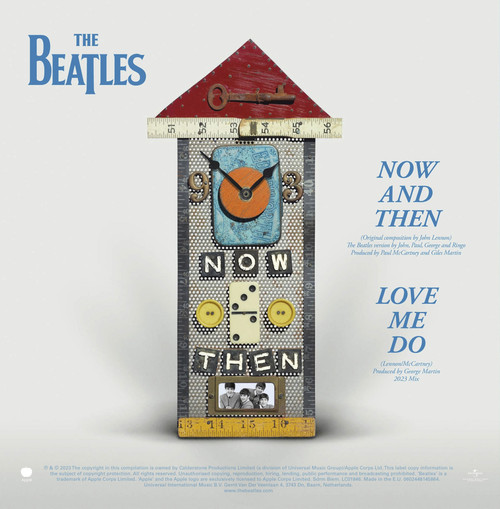 Giles Martin was also involved, along with Paul, in inserting a bit of the backing harmonies used in the original sessions of "Here, There And Everywhere" into the last Beatles song "Now And Then," this occuring sometime in the later half of 2023. The insertion of these harmonies was accomplished at Abbey Road Studios by Giles Martin using the same methods he utilized in making the "Love" album detailed above, "Now And Then" being produced by Paul McCartney and Giles Martin (with Jeff Lynne as additional producer because of his work with the song in 1995) and mixed by Spike Stent. Giles Martin was also involved, along with Paul, in inserting a bit of the backing harmonies used in the original sessions of "Here, There And Everywhere" into the last Beatles song "Now And Then," this occuring sometime in the later half of 2023. The insertion of these harmonies was accomplished at Abbey Road Studios by Giles Martin using the same methods he utilized in making the "Love" album detailed above, "Now And Then" being produced by Paul McCartney and Giles Martin (with Jeff Lynne as additional producer because of his work with the song in 1995) and mixed by Spike Stent.
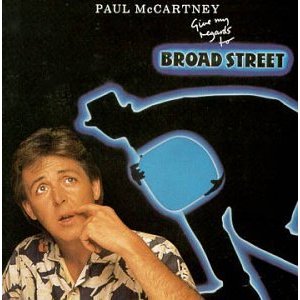 Paul has recorded the song on different occasions as well, the first being a new studio rendition for his “Give My Regards To Broad Street” soundtrack album and film. This recording was done between November 1982 and July of 1983. Differences from the original song include his introductory lyrics, singing “I need a love of my own” instead of “I need my love to be here.” A small horn section is included to replace the harmonies and George Harrison’s lead guitar passages while the second verse and the repeat of the bridge and final verse are completely omitted. Paul has recorded the song on different occasions as well, the first being a new studio rendition for his “Give My Regards To Broad Street” soundtrack album and film. This recording was done between November 1982 and July of 1983. Differences from the original song include his introductory lyrics, singing “I need a love of my own” instead of “I need my love to be here.” A small horn section is included to replace the harmonies and George Harrison’s lead guitar passages while the second verse and the repeat of the bridge and final verse are completely omitted.
On January 25th, 1991, Paul performed the song for “MTV Unplugged,” the recording of which was released on the album “Unplugged (The Official Bootleg).” The full song is performed this time with Paul “Wix” Wickens simulating the block harmonies and guitar leads on accordion.
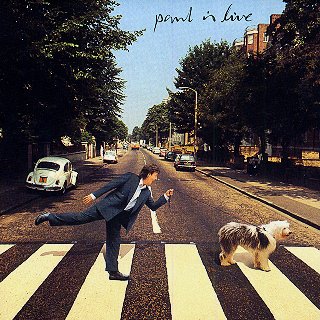 Sometime between March 22nd and June 15th, 1993, Paul performed the song live, resulting in the recording that appeared on the album “Paul Is Live.” A further recording was made between April 1st and May 18th, 2002 during a live performance that was released on the double-disc “Back In The US” and the internationally released “Back In The World.” Sometime between March 22nd and June 15th, 1993, Paul performed the song live, resulting in the recording that appeared on the album “Paul Is Live.” A further recording was made between April 1st and May 18th, 2002 during a live performance that was released on the double-disc “Back In The US” and the internationally released “Back In The World.”
Song Structure and Style
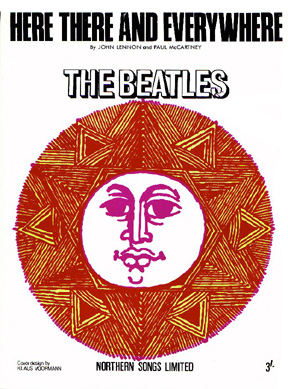 The structure of this song demonstrates how one can take the essential standard formula of a pop song and weave it into an imaginative and very beautiful piece of work. Hardly just another cranked-out filler for an album, but a masterful display of maturity in songwriting within the bounds of the usual ‘verse/ verse/ bridge/ verse/ bridge/ verse’ format (or aababa). A brief introduction and conclusion rounds out the arrangement with no solo or instrumental section needed. The structure of this song demonstrates how one can take the essential standard formula of a pop song and weave it into an imaginative and very beautiful piece of work. Hardly just another cranked-out filler for an album, but a masterful display of maturity in songwriting within the bounds of the usual ‘verse/ verse/ bridge/ verse/ bridge/ verse’ format (or aababa). A brief introduction and conclusion rounds out the arrangement with no solo or instrumental section needed.
Like “Do You Want To Know A Secret?” and "If I Fell" from the earlier Beatles catalog, an adlib introduction, or "rambling preamble" as Paul describes above, begins the proceedings without any true sense of meter, although it roughly is captured in an estimated four measures. The elements of this introduction comprise Paul on rhythm guitar while setting the stage lyrically: “To lead a better life, I need my love to be here.” The double-tracked block harmonies from John, Paul and George enter at this early stage as well, adding an air of richness right off the bat.
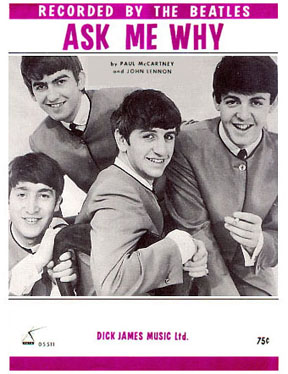 A couple of tom beats from Ringo set the meter for the entrance of the first verse, which is eight measures long. The jazzy chord pattern of the rhythm guitar, which also harkens back to the early Beatle years (reminiscent of “Ask Me Why” but also pre-shadowing the bridge of “Sexy Sadie”) is joined on the downbeat by Paul’s overdubbed bass and Ringo’s gentle drum work. The building three-part harmonies of the first half of this verse covers nearly two measures each before they take their collective breath. However, the second half of the verse shows them harmonizing by single measures, taking a breath at the end of each measure. Ringo ends the verse with a subdued but engaging tom break. The entire arrangement just described is repeated identically for the second verse. A couple of tom beats from Ringo set the meter for the entrance of the first verse, which is eight measures long. The jazzy chord pattern of the rhythm guitar, which also harkens back to the early Beatle years (reminiscent of “Ask Me Why” but also pre-shadowing the bridge of “Sexy Sadie”) is joined on the downbeat by Paul’s overdubbed bass and Ringo’s gentle drum work. The building three-part harmonies of the first half of this verse covers nearly two measures each before they take their collective breath. However, the second half of the verse shows them harmonizing by single measures, taking a breath at the end of each measure. Ringo ends the verse with a subdued but engaging tom break. The entire arrangement just described is repeated identically for the second verse.
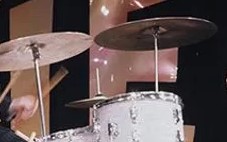 The backing harmonies take a break for the following four-measure bridge, which begins with a gentle but highly compressed cymbal crash from Ringo. Immediately after the first line “I want her everywhere,” Paul exhibits a serious squeak on his electric guitar while switching between the first two chords. As his lyric line “I need never care” completes, George begins his double-tracked rising-and-falling lead guitar passage which appears rushed in the third measure. It then stabilizes for the fourth measure as it is reduced to a single tracked performance, this finishing up the bridge. The backing harmonies take a break for the following four-measure bridge, which begins with a gentle but highly compressed cymbal crash from Ringo. Immediately after the first line “I want her everywhere,” Paul exhibits a serious squeak on his electric guitar while switching between the first two chords. As his lyric line “I need never care” completes, George begins his double-tracked rising-and-falling lead guitar passage which appears rushed in the third measure. It then stabilizes for the fourth measure as it is reduced to a single tracked performance, this finishing up the bridge.
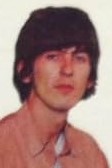 The third verse then commences with the same instrumentation as the previous two including the reemergence of the group's lush harmonies. In the repeat of the bridge that comes immediately afterwards, Paul makes sure his guitar doesn’t squeak this time around. George also makes sure his guitar passage in the last two measures isn’t rushed. I guess practice makes perfect. The third verse then commences with the same instrumentation as the previous two including the reemergence of the group's lush harmonies. In the repeat of the bridge that comes immediately afterwards, Paul makes sure his guitar doesn’t squeak this time around. George also makes sure his guitar passage in the last two measures isn’t rushed. I guess practice makes perfect.
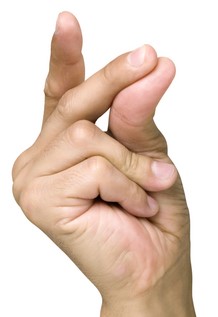 The repeat of the third verse then appears, with Paul somehow forgetting to accent the two- and four- beat in his guitar rhythm like the rest of the song, this time accenting all four beats for the first measure. He then remembers his pattern and plays it correctly for the remainder of the song. One might suggest that an edit occurred at the beginning of the final verse with Paul coming in cold at that point and momentarily forgetting the pattern he played, although no edits are indicated on the available documents. Another difference in this verse is the appearance of finger snaps in the third measure audible from the harmony track, these snaps continuing for the remainder of the song. The third measure also reveals the clever double-tracking effect of Paul harmonizing with himself on the lines “love never dies, watching her eyes.” The repeat of the third verse then appears, with Paul somehow forgetting to accent the two- and four- beat in his guitar rhythm like the rest of the song, this time accenting all four beats for the first measure. He then remembers his pattern and plays it correctly for the remainder of the song. One might suggest that an edit occurred at the beginning of the final verse with Paul coming in cold at that point and momentarily forgetting the pattern he played, although no edits are indicated on the available documents. Another difference in this verse is the appearance of finger snaps in the third measure audible from the harmony track, these snaps continuing for the remainder of the song. The third measure also reveals the clever double-tracking effect of Paul harmonizing with himself on the lines “love never dies, watching her eyes.”
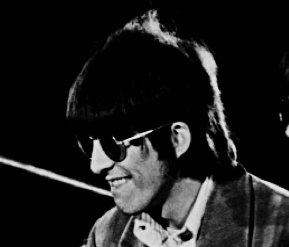 A simple four measure conclusion of the recording next occurs, which finally puts together the lyrical content of the verses to form the title of the song “here, there and everywhere.” The same chord pattern of the first four measures of the verse is used as a backdrop for this conclusion, block harmonies and all, with George playing a falling five-note passage with his volume pedal to bring things to a close on the final ringing chord. A simple four measure conclusion of the recording next occurs, which finally puts together the lyrical content of the verses to form the title of the song “here, there and everywhere.” The same chord pattern of the first four measures of the verse is used as a backdrop for this conclusion, block harmonies and all, with George playing a falling five-note passage with his volume pedal to bring things to a close on the final ringing chord.
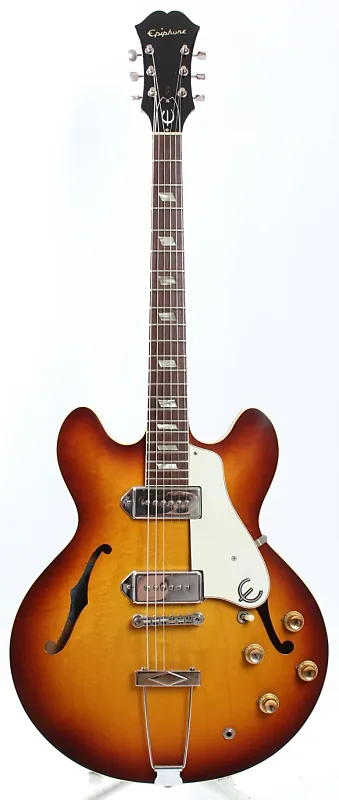 There are no pretenses made at this point in their career regarding who plays guitar. John and George may have been the guitarists in the band throughout the years but, since this is primarily a Paul creation, he may as well play guitar himself instead of going through the motions of teaching it to someone else. And a fine job he did. There are no pretenses made at this point in their career regarding who plays guitar. John and George may have been the guitarists in the band throughout the years but, since this is primarily a Paul creation, he may as well play guitar himself instead of going through the motions of teaching it to someone else. And a fine job he did.
His bass guitar work was done simply but appropriately, being put down on its own designated track to get the right timbre. Laying down the lead vocals separately as an overdub was also a good idea, his guide vocal on "take seven" (as released on the “Real Love” CD single) not quite making the grade because of being performed while playing the guitar. The finesse needed to capture the mood and hit the notes with the desired accuracy could only be done with the utmost attention to detail, not to mention with the use of double-tracking and vari-speed. Paul’s vocals on the George Martin-arranged harmonies are also done superbly.
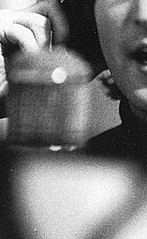 The rest of the band were minor players on this track, but their contributions were nonetheless essential. Both John and George cooperated nicely on the vocal harmonies, the finger snaps probably being an adlib addition at this stage that was kept because of being embedded on this track. While George’s 12-string lead guitar work is very simple, its appearances in the song stand out as an important ingredient that would surely be missed had they not been there. And Ringo’s restraint on the drum kit suits the song very well; his light drum fills fit perfectly in the arrangement. The rest of the band were minor players on this track, but their contributions were nonetheless essential. Both John and George cooperated nicely on the vocal harmonies, the finger snaps probably being an adlib addition at this stage that was kept because of being embedded on this track. While George’s 12-string lead guitar work is very simple, its appearances in the song stand out as an important ingredient that would surely be missed had they not been there. And Ringo’s restraint on the drum kit suits the song very well; his light drum fills fit perfectly in the arrangement.
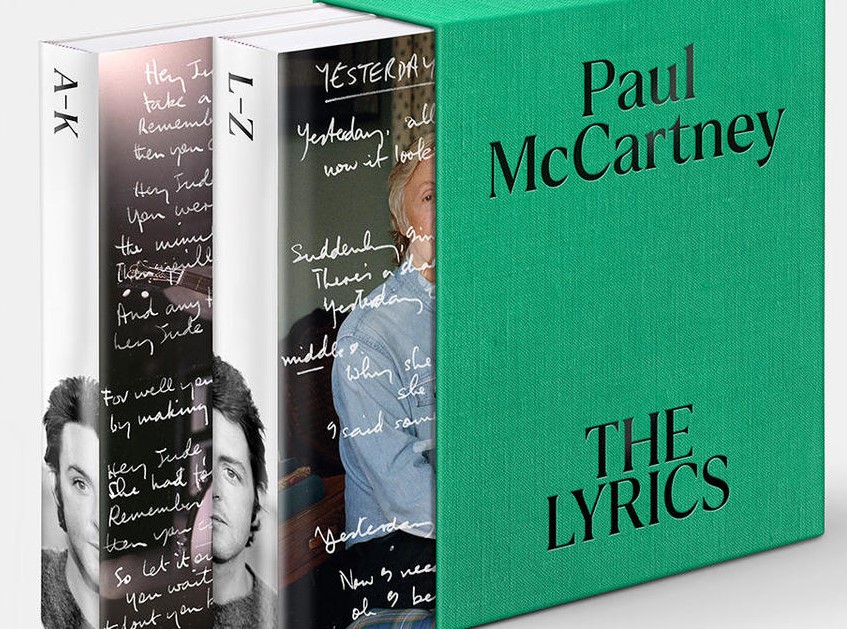 Paul discusses in his book "The Lyrics" the overall feeling he was aiming at structurally. "What I like most about this song is that we think we're on a path on the moors and we're going for a walk, and then suddenly we've arrived where we started. It's not quite that we've gone around in a circle. It's more magical than that. We've come to another beginning of the path. You can see back to where you came from, and you're definitely not there. You're in a new place, though it's got the same scenery. I've always liked that trick." Paul discusses in his book "The Lyrics" the overall feeling he was aiming at structurally. "What I like most about this song is that we think we're on a path on the moors and we're going for a walk, and then suddenly we've arrived where we started. It's not quite that we've gone around in a circle. It's more magical than that. We've come to another beginning of the path. You can see back to where you came from, and you're definitely not there. You're in a new place, though it's got the same scenery. I've always liked that trick."
American Releases
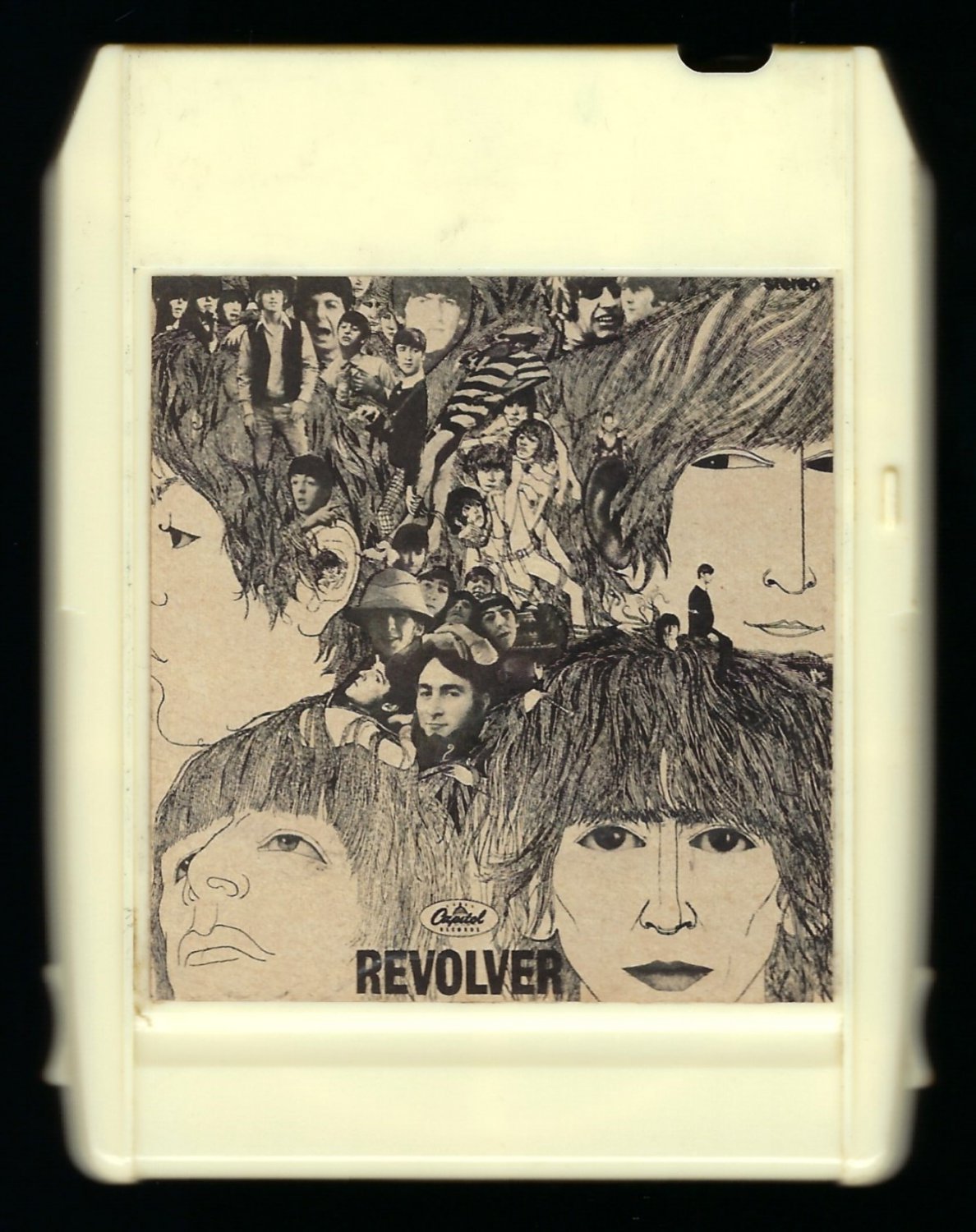 August 8th, 1966 was the first US release date for the song on the album “Revolver.” A startling but compelling contrast resulted as the extremely Eastern flavor of “Love You To” faded out to reveal the tender introduction to “Here, There And Everywhere,” showing the expanding versatility of the band. This American version of the "Revolver" album got a compact disc release on January 21st, 2014, with both the mono and stereo versions contained on a single CD. August 8th, 1966 was the first US release date for the song on the album “Revolver.” A startling but compelling contrast resulted as the extremely Eastern flavor of “Love You To” faded out to reveal the tender introduction to “Here, There And Everywhere,” showing the expanding versatility of the band. This American version of the "Revolver" album got a compact disc release on January 21st, 2014, with both the mono and stereo versions contained on a single CD.
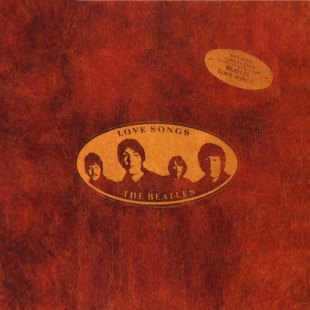 Over eleven years later, on October 21st, 1977, the song got its second release on the compilation album “Love Songs.” Appearing in the midst of the popular disco craze, it still managed to peak at #24 on the Billboard album chart, “Here, There And Everywhere” closing out side one of this two disc set. Over eleven years later, on October 21st, 1977, the song got its second release on the compilation album “Love Songs.” Appearing in the midst of the popular disco craze, it still managed to peak at #24 on the Billboard album chart, “Here, There And Everywhere” closing out side one of this two disc set.
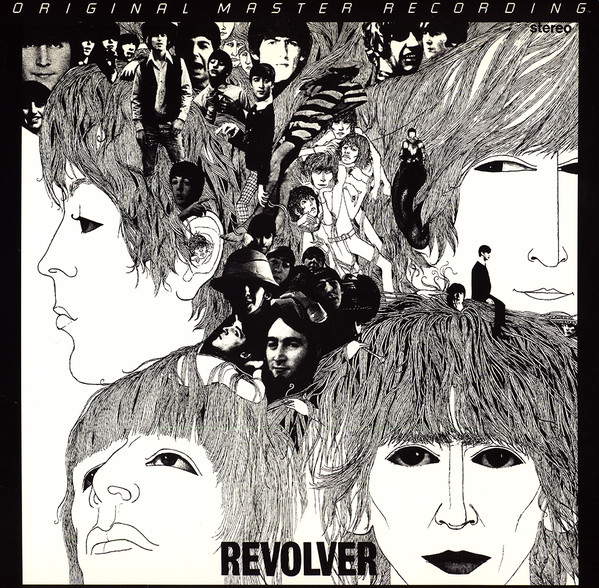 The first time the original British "Revolver” album was made available in America was the "Original Master Recording" vinyl edition released through Mobile Fidelity Sound Lab sometime in 1985. This album included "Here, There And Everywhere" and was prepared utilizing half-speed mastering technology from the original master tape on loan from EMI. This version of the album was only available for a short time and is quite collectible today. The first time the original British "Revolver” album was made available in America was the "Original Master Recording" vinyl edition released through Mobile Fidelity Sound Lab sometime in 1985. This album included "Here, There And Everywhere" and was prepared utilizing half-speed mastering technology from the original master tape on loan from EMI. This version of the album was only available for a short time and is quite collectible today.
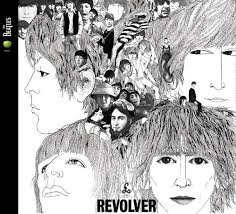 On April 30th, 1987, the original UK version of the “Revolver” album with all fourteen tracks was first released on compact disc, a vinyl edition coming out on July 21st, 1987. It was then remastered and re-released on CD on September 9th, 2009 and on vinyl on November 13th, 2012. A remarkable newly mixed edition of "Revolver" created by Giles Martin was released on vinyl and CD on October 28th, 2022. On April 30th, 1987, the original UK version of the “Revolver” album with all fourteen tracks was first released on compact disc, a vinyl edition coming out on July 21st, 1987. It was then remastered and re-released on CD on September 9th, 2009 and on vinyl on November 13th, 2012. A remarkable newly mixed edition of "Revolver" created by Giles Martin was released on vinyl and CD on October 28th, 2022.
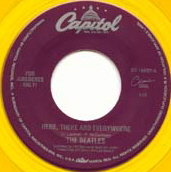 Many may not know that the song was released as a single on January 24th, 1996. This was on the Capitol Cema series with the legend “For Jukeboxes Only” printed on the label, not to mention being printed on yellow vinyl, making it quite rare today. Another “Revolver” track, “Good Day Sunshine,” was positioned as the b-side. Many may not know that the song was released as a single on January 24th, 1996. This was on the Capitol Cema series with the legend “For Jukeboxes Only” printed on the label, not to mention being printed on yellow vinyl, making it quite rare today. Another “Revolver” track, “Good Day Sunshine,” was positioned as the b-side.
Also the same year, on March 4th, 1996, the CD single for “Real Love” was released, which featured “take seven” of “Here, There And Everywhere” as recorded on June 16th, 1966 with digitally remastered block harmonies tacked onto the final verse to create a never-before-heard version of the song. In this primitive state, the beauty of an excellently written song shines through.
 September 9th, 2009 was the release date for the box set “The Beatles In Mono,” which marks the first CD release of the original 1966 mono mix of “Here, There And Everywhere” not available since the '60s. Also released on September 9th, 2009, in promotion of the remastered Beatles catalog, the "09.09.09 Sampler" was distributed to retailers and radio programmers, this mono mix of "Here, There And Everywhere" being featured therein. The vinyl edition of the box set was first released on September 9th, 2014. September 9th, 2009 was the release date for the box set “The Beatles In Mono,” which marks the first CD release of the original 1966 mono mix of “Here, There And Everywhere” not available since the '60s. Also released on September 9th, 2009, in promotion of the remastered Beatles catalog, the "09.09.09 Sampler" was distributed to retailers and radio programmers, this mono mix of "Here, There And Everywhere" being featured therein. The vinyl edition of the box set was first released on September 9th, 2014.
In promotion of the 2014 box set "The US Albums," a 25-song sampler CD was manufactured for limited release on January 21st, 2014, this containing the mono mix of "Here, There And Everywhere."
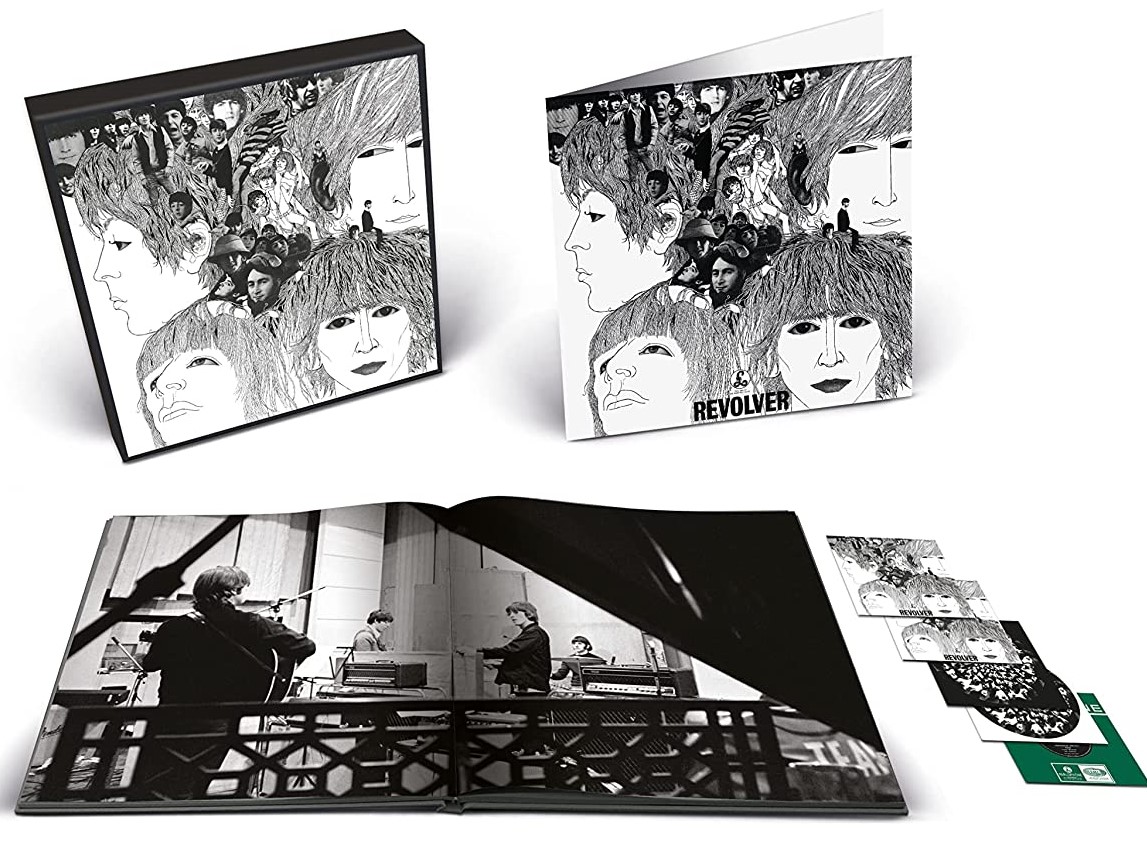 Then, on October 28th, 2022, various new editions of the 14 track “Revolver” album were released that feature the amazing new stereo mix by Giles Martin. The “Special Edition Deluxe 2CD Set” features “Here, There And Everywhere” in its new stereo mix as well as “take six” from the 1966 session tapes. The “Deluxe Edition,” which is available as a 5 CD box set and a 4LP / 1 EP box set, includes these versions as well as the original mono master from 1966. The 2022 Giles Martin stereo mix of the album was also made available for the first time as a vinyl picture disc for a limited time. Then, on October 28th, 2022, various new editions of the 14 track “Revolver” album were released that feature the amazing new stereo mix by Giles Martin. The “Special Edition Deluxe 2CD Set” features “Here, There And Everywhere” in its new stereo mix as well as “take six” from the 1966 session tapes. The “Deluxe Edition,” which is available as a 5 CD box set and a 4LP / 1 EP box set, includes these versions as well as the original mono master from 1966. The 2022 Giles Martin stereo mix of the album was also made available for the first time as a vinyl picture disc for a limited time.
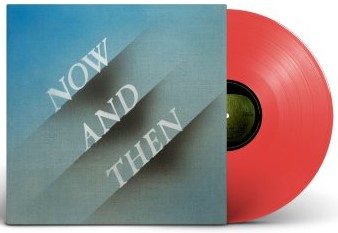 As detailed above, vocal harmonies from "Here, There And Everywhere" were inserted into the last Beatles song "Now And Then," this single being released on November 2nd, 2023 and its inclusion on the newly mixed album "The Beatles / 1967 - 1970" (aka "The Blue Album") being released on November 10th, 2023. As detailed above, vocal harmonies from "Here, There And Everywhere" were inserted into the last Beatles song "Now And Then," this single being released on November 2nd, 2023 and its inclusion on the newly mixed album "The Beatles / 1967 - 1970" (aka "The Blue Album") being released on November 10th, 2023.
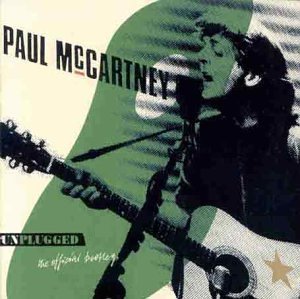 Paul McCartney’s solo releases of the song begin with the soundtrack album to his film “Give My Regards To Broad Street,” released on October 22nd, 1984. Then on May 20th, 1991, the album “Unplugged (The Official Bootleg)” came out which featured his acoustic rendition of the song as witnessed on “MTV Unplugged.” His live album “Paul Is Live” also featured the song, this being released on November 15th, 1993. Then came “Back In The US” on November 11th, 2002. Paul McCartney’s solo releases of the song begin with the soundtrack album to his film “Give My Regards To Broad Street,” released on October 22nd, 1984. Then on May 20th, 1991, the album “Unplugged (The Official Bootleg)” came out which featured his acoustic rendition of the song as witnessed on “MTV Unplugged.” His live album “Paul Is Live” also featured the song, this being released on November 15th, 1993. Then came “Back In The US” on November 11th, 2002.
Live Performances
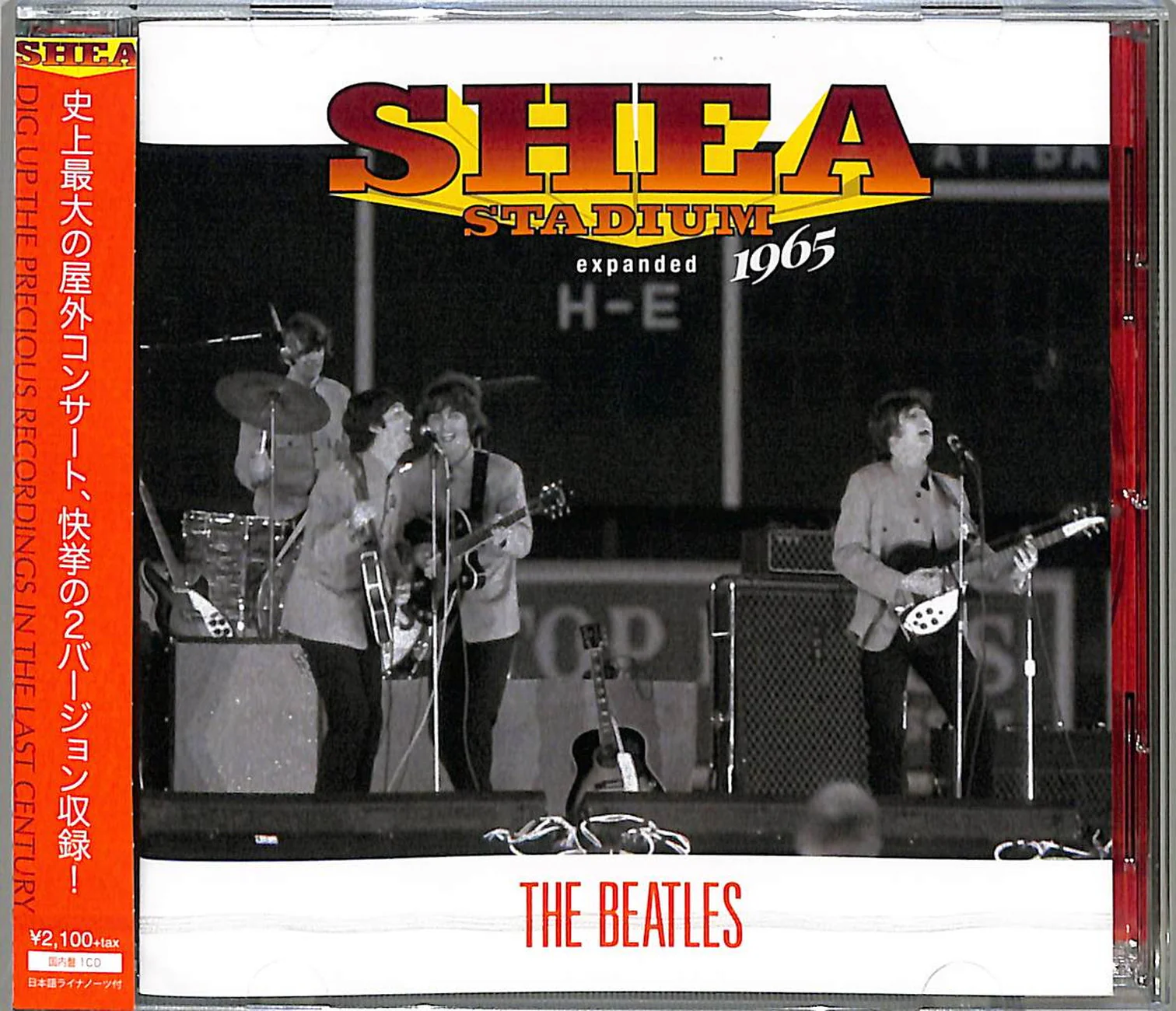 The Beatles opted not to promote any “Revolver” songs on their final American tour despite the fact that it had just been released and could have been easily promoted in this way. The band couldn’t be bothered to work up any of these songs for their final international shows, “Here, There And Everywhere” being a good possible addition to their set because of the song's minimal instrumentation. The album was wildly successful anyway so I guess it didn’t really need promoting. The Beatles opted not to promote any “Revolver” songs on their final American tour despite the fact that it had just been released and could have been easily promoted in this way. The band couldn’t be bothered to work up any of these songs for their final international shows, “Here, There And Everywhere” being a good possible addition to their set because of the song's minimal instrumentation. The album was wildly successful anyway so I guess it didn’t really need promoting.
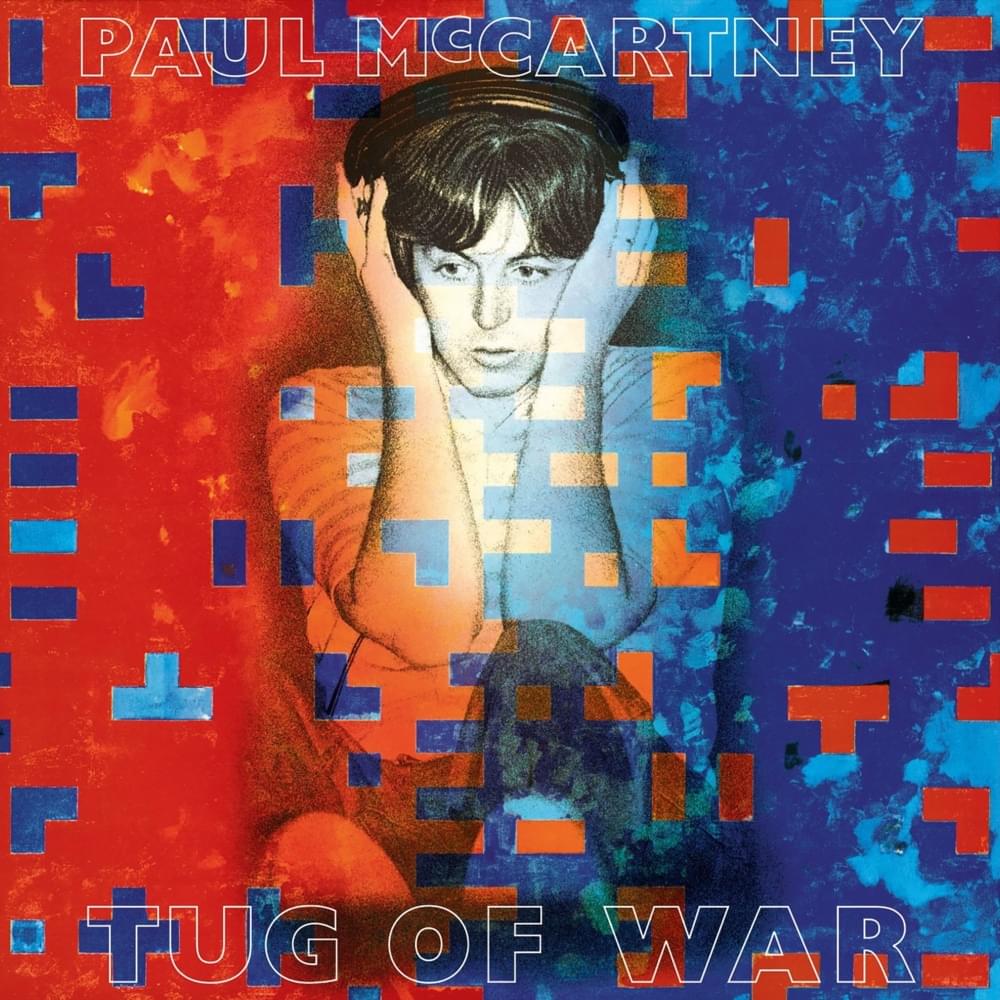 The first time we would ever see a performance of this incredible song was in Paul’s movie “Give My Regards To Broad Street.” Performed as the middle song in between “Yesterday” and his "Tug Of War" track “Wanderlust,” Paul is seen playing the song on acoustic guitar in a recording studio accompanied by a trio of horn players interspersed with scenes of George Martin and Geoff Emerick in the control room and Ringo hurriedly fumbling through assorted percussion instruments searching for brushes so as to join him in playing the song. He finds the brushes, but only after the truncated version of the song ends. The first time we would ever see a performance of this incredible song was in Paul’s movie “Give My Regards To Broad Street.” Performed as the middle song in between “Yesterday” and his "Tug Of War" track “Wanderlust,” Paul is seen playing the song on acoustic guitar in a recording studio accompanied by a trio of horn players interspersed with scenes of George Martin and Geoff Emerick in the control room and Ringo hurriedly fumbling through assorted percussion instruments searching for brushes so as to join him in playing the song. He finds the brushes, but only after the truncated version of the song ends.
 This being proclaimed by Paul as one of his all-time proudest moments as a songwriter, it was inevitable that it be included in his solo live performances through his later years. His first surprise performance of the song was on the cable program “MTV Unplugged,” filmed on January 25th, 1991 and aired on April 3rd of that year. In promotion of this event, Paul and his acoustic group did six international “secret gigs” from May 8th to July 24th of 1991, the set list including “Here, There And Everywhere.” This being proclaimed by Paul as one of his all-time proudest moments as a songwriter, it was inevitable that it be included in his solo live performances through his later years. His first surprise performance of the song was on the cable program “MTV Unplugged,” filmed on January 25th, 1991 and aired on April 3rd of that year. In promotion of this event, Paul and his acoustic group did six international “secret gigs” from May 8th to July 24th of 1991, the set list including “Here, There And Everywhere.”
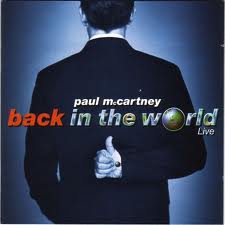 Paul then included the song in his worldwide “New World Tour” of 1993, which spanned February 18th to December 16th of that year. His “Driving USA” tour of 2002 also included the song, which ran from April 1st to May 18th. Then his “Back In The US” tour featured the song, running from September 21st to October 29th of 2002. His “Driving Mexico” tour (November 2nd through 5th, 2002) and “Driving Japan” tour (November 11th through 18th, 2002) also included the song. His international “Back In The World” tour of 2003 (March 25th to June 1st) also included the song, as did the 2016 dates of his "One On One" tour (April 13th to October 14th). Paul then included the song in his worldwide “New World Tour” of 1993, which spanned February 18th to December 16th of that year. His “Driving USA” tour of 2002 also included the song, which ran from April 1st to May 18th. Then his “Back In The US” tour featured the song, running from September 21st to October 29th of 2002. His “Driving Mexico” tour (November 2nd through 5th, 2002) and “Driving Japan” tour (November 11th through 18th, 2002) also included the song. His international “Back In The World” tour of 2003 (March 25th to June 1st) also included the song, as did the 2016 dates of his "One On One" tour (April 13th to October 14th).
Conclusion
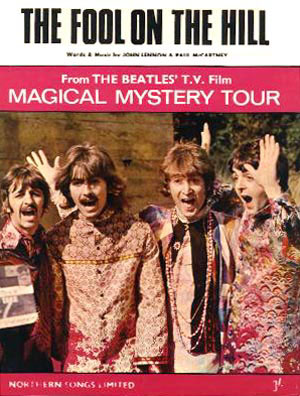 With his reputation as the “balladeer” of The Beatles fully cemented by this point, McCartney continued to display his capability in this genre of music with each successive album, although not always with the romanticality of “Here, There And Everywhere.” “She’s Leaving Home” and “The Fool On The Hill” put unpredictable lyrical spins on his melodic ballads, while “Golden Slumbers” and “The Long And Winding Road” insert more of a poetic vagueness into his standard “love song” model. Not to be forgotten is “I Will” which, while written in 1968, captures the sweet sincerity of his earlier '60s ballads. With his reputation as the “balladeer” of The Beatles fully cemented by this point, McCartney continued to display his capability in this genre of music with each successive album, although not always with the romanticality of “Here, There And Everywhere.” “She’s Leaving Home” and “The Fool On The Hill” put unpredictable lyrical spins on his melodic ballads, while “Golden Slumbers” and “The Long And Winding Road” insert more of a poetic vagueness into his standard “love song” model. Not to be forgotten is “I Will” which, while written in 1968, captures the sweet sincerity of his earlier '60s ballads.
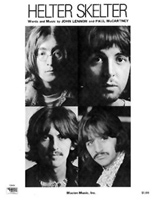 However you slice it, Paul McCartney just has the knack for putting together a lyrically convincing and melodic love song. Yes, he can rock like the best of them, but the likes of “Helter Skelter” have never been considered his strong suit. To this day, the most cherished pieces from the McCartney pen are songs such as “Here, There And Everywhere.” I assume it will always be that way. However you slice it, Paul McCartney just has the knack for putting together a lyrically convincing and melodic love song. Yes, he can rock like the best of them, but the likes of “Helter Skelter” have never been considered his strong suit. To this day, the most cherished pieces from the McCartney pen are songs such as “Here, There And Everywhere.” I assume it will always be that way.
Song Summary
“Here, There And Everywhere”
Written by: John Lennon / Paul McCartney
-
Song Written: June, 1966
-
Song Recorded: June 16 & 17, 1966
-
First US Release Date: August 8, 1966
-
First US Album Release: Capitol #ST-2576 “Revolver”
-
US Single Release: Capitol Cema #S7-18897
-
Highest Chart Position: n/a
-
British Album Release: Parlophone #PCS 7009 “Revolver”
-
Length: 2:29
-
Key: G major
-
Producer: George Martin
-
Engineers: Geoff Emerick, Phil McDonald
Instrumentation (most likely):
-
Paul McCartney - Lead and Harmony Vocals, Rhythm Guitar (1962 Epiphone Casino ES-230TD), Bass Guitar (1964 Rickenbacker 4001S), finger snaps
-
George Harrison – Lead Guitar (1965 Rickenbacker 360-12), Harmony Vocals, finger snaps
-
Ringo Starr – Drums (1964 Ludwig Super Classic Black Oyster Pearl)
-
John Lennon - Harmony Vocals, finger snaps
Written and compiled by Dave Rybaczewski
|
IF YOU WOULD LIKE TO MAKE A DONATION TO KEEP THIS WEBSITE UP AND RUNNING, PLEASE CLICK BELOW!
Sign Up Below for our MONTHLY BEATLES TRIVIA QUIZ!
|